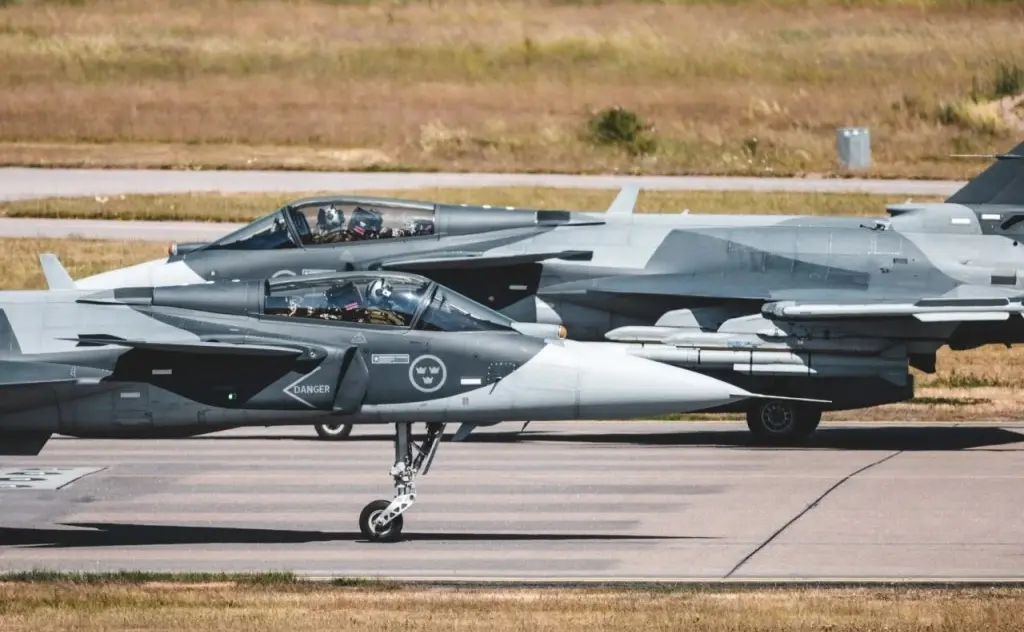A new twist emerged in India’s quest to modernize its air force with the Multi-Role Fighter Aircraft (MRFA) contract, which could be worth up to $20 billion. SAAB’s Gripen-E fighter jets are strong contenders, but the Indian Light Combat Aircraft (LCA) Tejas may be standing in their way. This competition is crucial for India as it aims to bolster its air defense capabilities amid rising security concerns.
Background of the MRFA Contract
India has long sought to upgrade its air force with the MRFA contract, which plans to purchase 114 advanced fighter jets. The deal is considered one of the largest military contracts in recent history. The goal is to replace aging aircraft, improve combat capabilities, and ensure air superiority against potential threats. Several global defense manufacturers, including SAAB, Boeing, Dassault Aviation, and Lockheed Martin, are vying for this contract.
SAAB’s Gripen-E, an advanced multi-role fighter, is among the top contenders. The Swedish aircraft is known for its agility, advanced avionics, and cost-effectiveness. However, India’s homegrown fighter, the LCA Tejas, could play a significant role in the final decision.
India’s Focus on Indigenous Production
One of the Indian government’s key priorities in defense procurement is boosting indigenous production. The “Make in India” initiative encourages the development and manufacturing of military equipment within the country. The LCA Tejas, developed by Hindustan Aeronautics Limited (HAL), is a product of this initiative.
The LCA Tejas has been praised for its performance in various trials. It is a lightweight, multi-role fighter designed to meet the needs of the Indian Air Force (IAF). The aircraft has already been inducted into the IAF, with several squadrons operational. It is cheaper than many foreign counterparts, making it an attractive option for the Indian government.
The Challenges for Gripen-E
While the Gripen-E is highly capable, it faces several challenges in securing the MRFA contract. One of the main hurdles is the strong emphasis on indigenous production. The Indian government wants to reduce dependence on foreign suppliers and build a self-reliant defense industry. The LCA Tejas fits perfectly into this vision, as it is entirely developed and manufactured in India.
Moreover, the LCA Tejas is already in service with the IAF, and its production lines are set up and running. In contrast, SAAB would need to establish new production facilities in India, which could be time-consuming and expensive. This could delay the delivery of the Gripen-E jets if selected, which is a critical factor for the IAF.
Another point of consideration is technology transfer. India insists on full technology transfer in defense deals, which allows local manufacturers to learn and eventually produce advanced systems. While SAAB has offered to transfer technology, the extent of this offer is still under negotiation. The LCA Tejas, being an indigenous product, naturally has this advantage.
Cost and Operational Efficiency
Cost is a significant factor in the MRFA deal. The Indian government is looking for the best value for its money. The LCA Tejas is significantly cheaper than the Gripen-E. Although the Gripen-E offers advanced features, the cost difference might sway the decision in favor of the LCA Tejas, especially if budget constraints are considered.
Operational efficiency is another key factor. The LCA Tejas has already been tested in various environments and has proven its reliability. It has also been integrated into existing IAF infrastructure, which means that additional training or modifications would be minimal. On the other hand, the Gripen-E, while advanced, would require new infrastructure, training, and possibly additional costs for maintenance and support.
The Political Angle
Politics also plays a role in defense contracts. The Indian government has a strong desire to promote its indigenous defense industry, not just for economic reasons but also for strategic autonomy. By relying on homegrown systems like the LCA Tejas, India can ensure that it is not dependent on foreign countries for critical defense equipment.
Furthermore, the LCA Tejas is seen as a symbol of India’s growing defense capabilities. Choosing it over a foreign competitor would send a strong message both domestically and internationally. It would showcase India’s ability to develop and produce advanced military systems independently.
